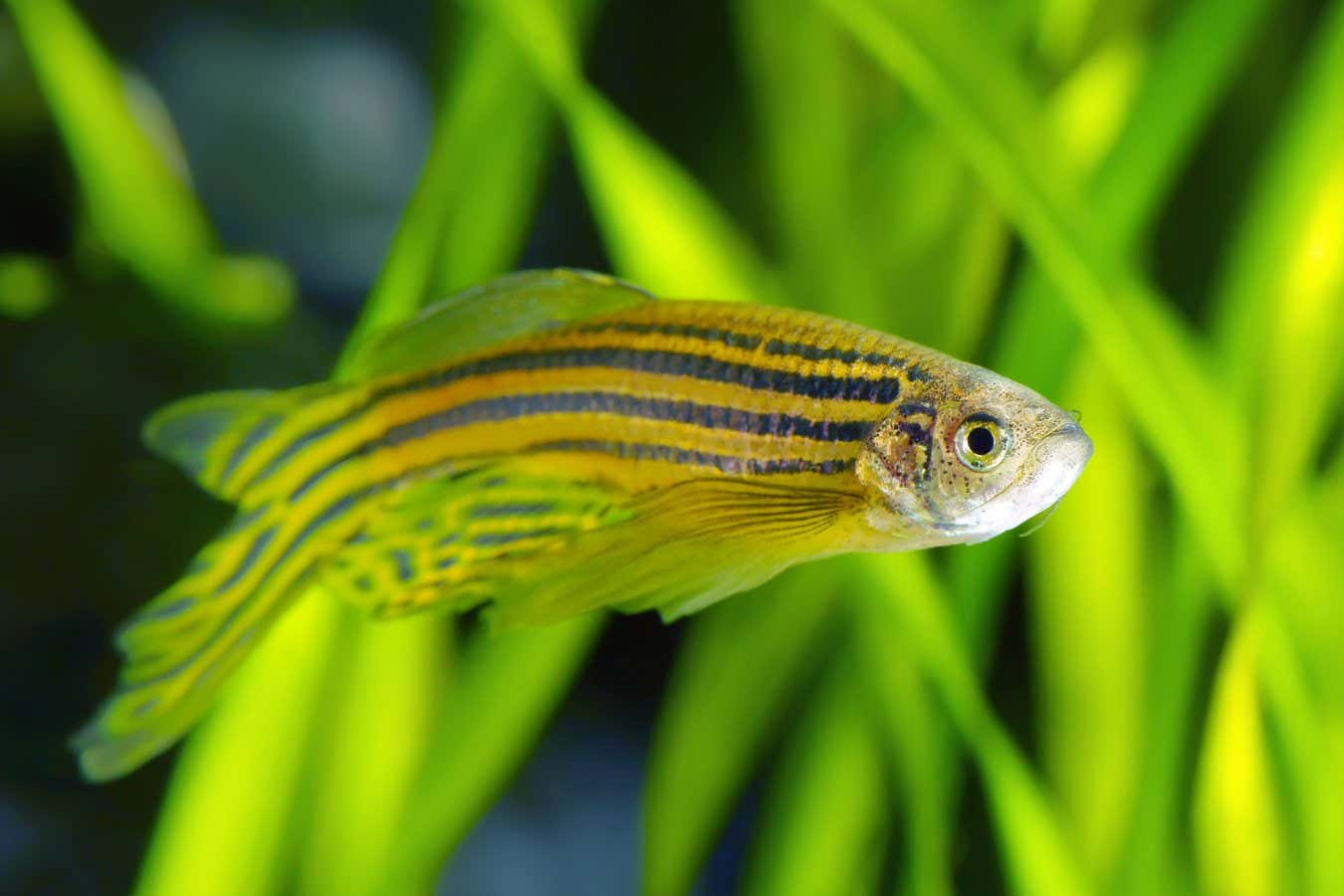Female zebrafish stock up their eggs with a supply of a compound that acts as a sunscreen
Grigorev Mikhail/Shutterstock
Zebrafish eggs contain a sunscreen called gadusol that protects the growing embryo from harmful rays.
The ultraviolet rays in sunlight are damaging. To shield against this, vertebrates produce a pigment called melanin. In aquatic vertebrates, like fish, melanin is produced by cells called melanophores. But melanophores appear late in embryonic development, so it wasn’t known what protects vulnerable fish embryos before this point.
To investigate, James Gagnon at the University of Utah and his colleagues looked at zebrafish, which live and spawn in shallow, sunlit waters, and have transparent larvae, so have no obvious shielding from UV light.
Advertisement
In particular, they looked at a substance called gadusol, which is found in the eggs of these fish, and many other fish species, and is known to absorb UV light.
The researchers genetically modified zebrafish so they lacked a gene called eevs that is involved in producing gadusol. They bred these specimens with wild zebrafish, which all had the gene, and then examined the resultant offspring.
Only when mother zebrafish had the eevs gene did eggs, embryos and larvae have gadusol, showing that the mother made and deposited the gadusol inside the egg she produced.
When Gagnon and his colleagues exposed embryos and larvae to UV light, embryos of mothers lacking the eevs gene failed to develop and only 2 per cent of their already hatched larvae survived.
Embryos exposed to UV light that didn’t have gadusol protection also showed high levels of compounds called cyclobutane pyrimidine dimers, a marker of DNA damage.
“It illustrates to what length organisms go to protect their genome,” says Alexander Schier at the University of Basel in Switzerland. “The mother synthesises and deposits a sunscreen-like compound that protects her eggs and embryos from UV damage. It is a very elegant mechanism to protect transparent animals.”
Gagnon and his colleagues also looked at the genomes of 136 fish species and discovered that genes for gadusol production are found widely, but have been lost in some species, like deep-sea fish or electric eels, that live in dark or murky water, meaning they are already protected from UV rays so don’t need the eevs gene.
Topics:
































